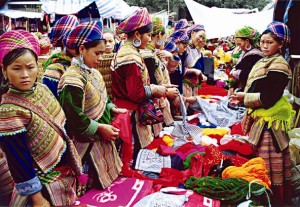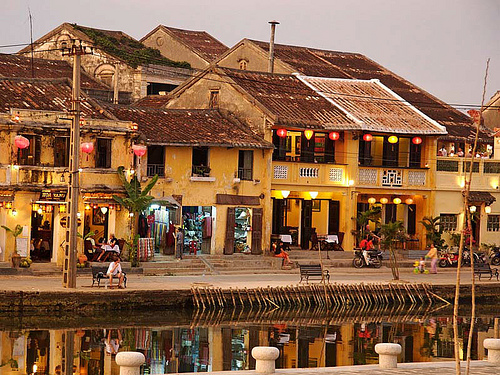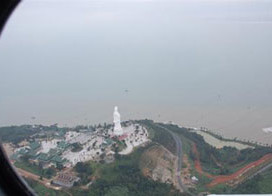It was too early. I struggled to peel my eyes open, wondering what the commotion outside was all about. The clock pointed to somewhere between 4 and 5 a.m.It was Sunday, and I was at a hotel in Sapa. Cursing the thin walls of the hotel, I walked to the window to peer into the dawning light outside.
I had expected to see a few people milling about their morning business. Instead, I saw the streets flooded with hundreds of H’mong and Red Dao people in colourful ethnic attire heading to the Sapa market.
It was an exotic orchestra of people speaking foreign tongues, children running, babies whimpering, chickens clucking and pigs snorting.
It was impossible to sleep with all the noise, so I decided to get out and experience the traditional Sunday market myself.
Love in the marketplace
The sights, sounds and smells of Sapa’s market are as distinctive as the ethnic tribes jostling about. Locals go to the market not just to buy and sell but also to unwind after a long, hard week.
I had been watching H’mong girls wearing garlands of dried mushrooms on strings around their necks, when suddenly, a H’mong man caught the arm of one of the girls and tried to pull her away.
I was alarmed, but a shopkeeper explained, “It is cướp vợ custom. When a H’mong man finds the girl of his dreams, he and his friends try to pull her away. If they succeed, they take her to the man’s house for a few days before visiting the girl’s family to ask for her hand in marriage.”
Rustic grub
Just inside the market gates were stalls full of mountain fruits such as peaches, plums, chestnuts, and Indian taro.
But the locals were eating hearty breakfasts of mèn mén (corn wheat cake), and thắng cố (horse meat soup). The better off leaned over steaming bowls of ph^, an expensive treat in these mountainous regions.
To the right are stalls full of trinkets and local products. Here you can find everything from ethnic silver jewelry to mushrooms, tam thất (notoginseng), honey, and linh chi fungus.
I bought a kilo of dried buds of the tam thất to gift friends back home. The tam thất bud tea is believed to aid good sleep.
Fabrics in Sapa
Next, I headed to the second floor of the Sapa market, which is known as the heart of the market. This is the arena of women selling brocades from their little workshops.
Many of these local artisans have been working in dimly-lit, cramped shops for decades, weaving yards of intricately designed brocades. Owing to the fabric’s popularity among tourists, a lot of the women here can converse quite well in English.
Heavily embroidered colorful blankets, pillow shams, table covers beckoned from all around. I found myself attracted to the more esoteric designs of the H’mong people.
A Sapa native told me that H’mong girls are taught to weave, sew and dye fabrics from a very young age. When they grow up, they are entrusted with the responsibility of making clothes for her family. The better her needle work, the better a girl’s prospects for marriage.
The market continues bustling until late afternoon, when locals begin to pack up their goods and head back to their homes in the terraced hills of Sapa.
Though tourism is growing rapidly in this region, mercifully, the H’mongs and Red Daos have preserved their colorful culture. In the Sapa market, the ethnic people and their cultures come alive every weekend, fusing together the simple times of the past in a traditional, but evolving market.





